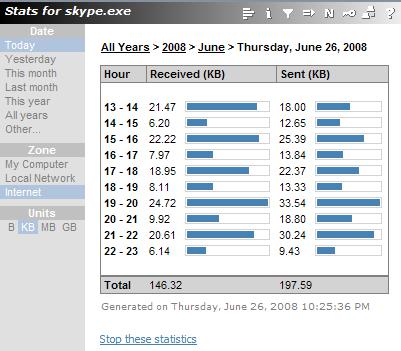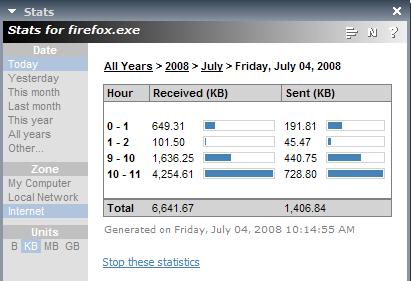Bandwidth usage can be extremely different for Skype users which can be attributed whether computers are being used as Skype Super-Nodes. A Super-Node is basically a computer that is running Skype and not preventing the software access to the ports 80 and 443 which are used to route traffic from other Skype users who are behind a protected system.
A great way for finding out if your system is being used as a Skype Super-Node is by installing a software that logs the bandwidth usage of Skype when the application is running. One tool that can do that is the trial version of Netlimiter which can be used for 30 days before it has to be registered.
Netlimiter logs all incoming and outgoing connections and their traffic consumption and it is possible to display the traffic consumption of a specific application as well.

The best way in my opinion to find out if Skype is acting as a Super-Node is to start it and let it run for a few hours without using it actively. Bandwidth consumption is obviously higher if you make calls or transfer data with Skype and it is more difficulty to find out if Skype is acting as a Super-Node if you have to analyze the traffic in direct and indirect traffic.
The above screenshot is showing the incoming and outgoing Skype bandwidth for most of today and as you can see it's less than 500 Kilobyte. Super-Nodes can use hundreds of Megabytes.
The easiest way to prevent Skype from being a Super-Node is to block access to the ports 80 and 443 in Skype. You can do that under Tools > Options > Connections. Just uncheck the option "Use port 80 and 443 as alternatives for incoming connections".
